Rustic bathroom countertops are an increasingly popular design choice, offering a charming blend of natural beauty and rugged elegance. The rustic style emphasizes natural materials, aged finishes, and a sense of timelessness. When incorporating rustic elements into a bathroom, the countertop often serves as a focal point, setting the tone for the entire space. Common materials for rustic countertops include wood, stone, and concrete, each bringing unique characteristics and benefits to the bathroom environment.
Wooden countertops are a classic choice for rustic bathrooms. They offer warmth and a natural look that is hard to replicate with other materials. Hardwoods like oak, maple, and walnut are popular choices due to their durability and resistance to moisture when properly sealed. Reclaimed wood is another excellent option, as it adds an authentic rustic feel while promoting sustainability. The key to maintaining wooden countertops in a bathroom is proper sealing and regular maintenance to prevent water damage and staining.
Stone countertops, particularly those made from granite, soapstone, or slate, are another staple of rustic bathroom design. These materials provide a robust and earthy appearance, often featuring natural variations in color and texture that enhance the rustic aesthetic. Granite is highly durable and resistant to scratches and heat, making it an excellent choice for busy bathrooms. Soapstone, with its smooth, matte finish, offers a unique look and is resistant to chemicals and bacteria. Slate, known for its dark, rich colors and natural cleft surface, adds a dramatic yet natural touch to rustic countertops.
Concrete countertops are a versatile option for rustic bathrooms. They can be customized with various finishes, colors, and textures to achieve the desired rustic look. Concrete is incredibly durable and can be sealed to resist water and stains. Its industrial appeal complements the rugged nature of rustic design, and it can be paired with other materials like wood or metal for a more eclectic look. The ability to mold concrete into any shape also allows for unique, bespoke countertop designs.

In addition to these primary materials, other elements can enhance the rustic feel of bathroom countertops. Edges can be left rough or chiseled for a more natural look, and surfaces can be distressed or aged to add character. Incorporating elements like live-edge wood slabs, river rock inlays, or hammered metal accents can further enhance the rustic charm. The choice of sink and fixtures, such as vessel sinks made from natural stone or copper and faucets with an antique finish, can also contribute to the overall rustic aesthetic.
One of the essential aspects of creating a rustic bathroom countertop is ensuring the materials are properly sealed and maintained to withstand the bathroom environment. Wood and concrete, in particular, are porous and can absorb water if not sealed correctly. Regular maintenance, including resealing and cleaning with appropriate products, is crucial to keeping rustic countertops looking their best. Stone countertops also require sealing, although they tend to be less high-maintenance than wood or concrete.
Lighting is another important consideration in rustic bathroom design. The right lighting can highlight the textures and natural beauty of rustic countertops. Warm, ambient lighting works well with rustic materials, creating a cozy and inviting atmosphere. Fixtures with a vintage or industrial look, such as wrought iron sconces or pendant lights with Edison bulbs, complement the rustic style beautifully.
Storage solutions in a rustic bathroom should align with the overall design. Open shelving made from reclaimed wood, vintage cabinets, or wicker baskets can provide functional storage while maintaining the rustic aesthetic. These elements should be thoughtfully integrated to avoid clutter and ensure the space remains functional and visually appealing.

Color schemes in rustic bathrooms typically feature earthy tones like browns, grays, and greens, which complement the natural materials used in the countertops. These colors can be incorporated through paint, tile, textiles, and accessories. Soft, neutral colors can create a calming environment, while bolder shades can add warmth and personality.
The overall layout and design of a rustic bathroom should focus on creating a harmonious and cohesive look. Elements should be balanced, with careful attention to the proportions and placement of each feature. For example, a large, rustic countertop might be paired with a simple, understated sink and fixtures to avoid overwhelming the space. The goal is to create a bathroom that feels organic and inviting, with each element contributing to the rustic theme.
When designing a rustic bathroom, it’s important to consider the environmental impact of the materials and products used. Choosing sustainable materials like reclaimed wood, natural stone, and eco-friendly concrete can help reduce the environmental footprint of the renovation. Additionally, selecting fixtures and accessories made from recycled or repurposed materials can further enhance the eco-friendly aspect of the design.
Incorporating greenery into a rustic bathroom can bring a touch of nature indoors and enhance the overall rustic feel. Plants like ferns, succulents, and ivy thrive in the humid bathroom environment and can be displayed in rustic containers like wooden boxes or ceramic pots. Greenery not only adds visual interest but also helps improve air quality and create a more relaxing atmosphere.
Accessories and décor play a significant role in completing the rustic look of a bathroom. Items like antique mirrors, woven baskets, and rustic soap dispensers can add character and charm. The key is to choose pieces that complement the natural materials and earthy color scheme of the space. Less is often more in rustic design, so it’s important to avoid over-cluttering the space with too many decorative items.
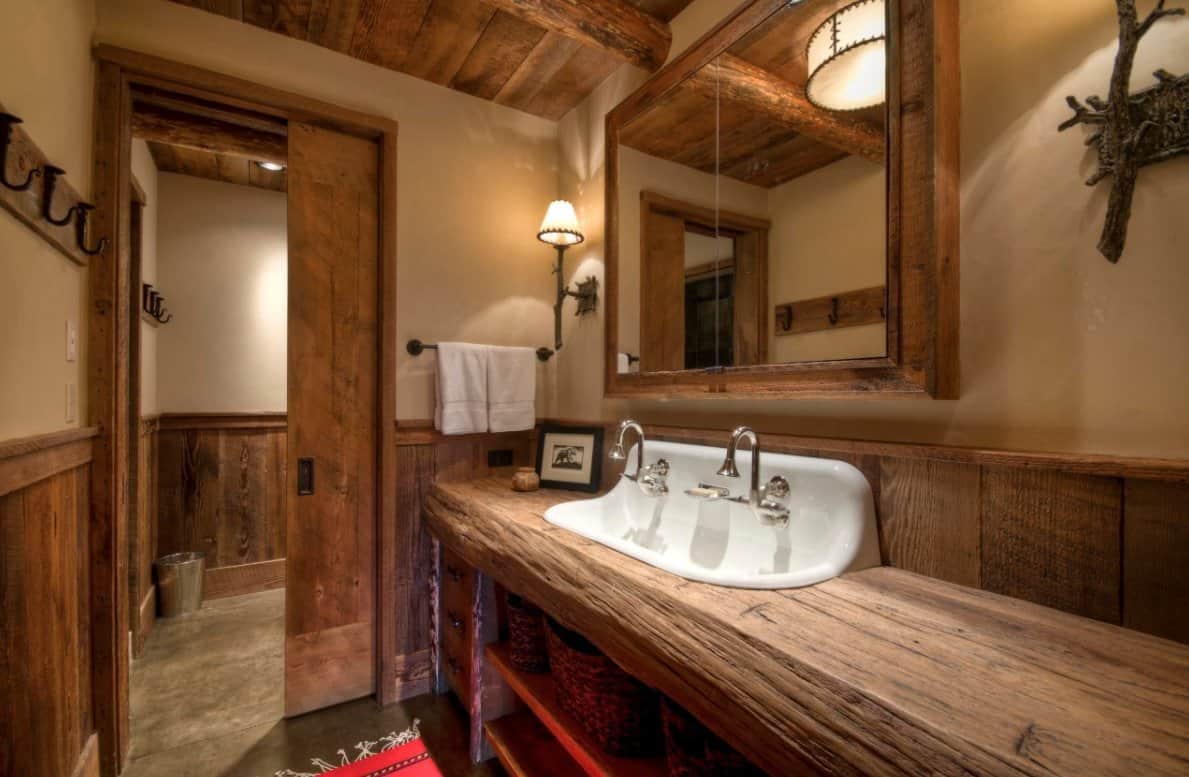
The rustic style is versatile and can be adapted to suit various tastes and preferences. Whether you prefer a more traditional rustic look with heavy wooden elements and dark colors or a modern rustic aesthetic with sleek lines and lighter tones, there are countless ways to customize your rustic bathroom countertop to fit your vision. The goal is to create a space that feels comfortable, inviting, and connected to nature.
Common mistakes to avoid when designing rustic bathroom countertops include choosing the wrong materials, neglecting proper maintenance, and over-decorating. One of the most significant errors is selecting materials that are not suitable for the bathroom environment. For example, using untreated wood or low-quality stone can result in damage and deterioration over time. It’s essential to choose materials that are durable, moisture-resistant, and properly sealed.
Another common mistake is neglecting maintenance. Rustic countertops, especially those made from wood and concrete, require regular sealing and cleaning to prevent water damage and staining. Failing to maintain these surfaces can lead to costly repairs and a less attractive appearance. It’s also important to use cleaning products that are safe for the specific material of the countertop to avoid damage.
Over-decorating is a frequent pitfall in rustic bathroom design. While accessories and décor are important, it’s easy to go overboard and create a cluttered, chaotic space. The key is to select a few well-chosen pieces that enhance the rustic aesthetic without overwhelming the room. Balance and simplicity are crucial to achieving a cohesive and visually appealing design.
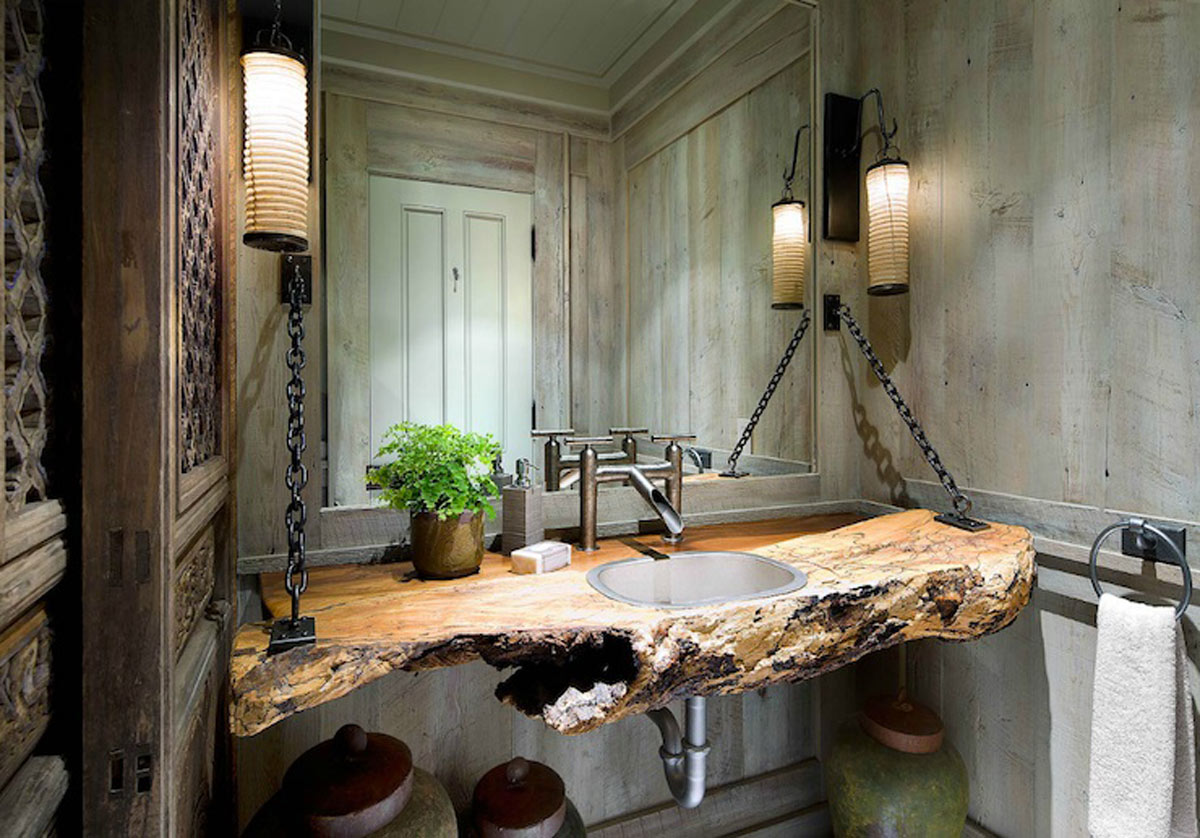
What materials are best for rustic bathroom countertops?
The best materials for rustic bathroom countertops are wood, stone, and concrete. Wood provides warmth and natural beauty but requires proper sealing and maintenance to prevent water damage. Stone, such as granite, soapstone, and slate, offers durability and a natural look, with variations in color and texture that enhance the rustic feel. Concrete is versatile and can be customized in various finishes and colors, offering a unique industrial appeal. Each material has its benefits and can be chosen based on personal preference and specific design goals.
How do I maintain a wooden countertop in a bathroom?
Maintaining a wooden countertop in a bathroom involves regular sealing to protect against moisture and water damage. It’s essential to use a high-quality, water-resistant sealant and reapply it as needed, typically every one to two years. Clean the countertop with mild soap and water, avoiding harsh chemicals that can strip the sealant. Wipe up spills promptly to prevent staining and use trivets or mats under hot items to avoid heat damage. Regular maintenance will help keep the wood looking beautiful and extend the lifespan of the countertop.
Can concrete countertops be used in rustic bathrooms?
Yes, concrete countertops are an excellent choice for rustic bathrooms. They offer durability, versatility, and a unique aesthetic that complements the rustic style. Concrete can be customized with different colors, textures, and finishes to achieve the desired look. It can also be paired with other materials like wood or metal for a more eclectic design. Proper sealing is crucial to protect concrete countertops from water and stains. With the right care, concrete countertops can provide a stylish and long-lasting option for rustic bathrooms.

What are some design tips for creating a rustic bathroom?
When designing a rustic bathroom, focus on using natural materials, earthy colors, and vintage or antique elements. Choose materials like wood, stone, and concrete for countertops, flooring, and fixtures. Incorporate textures and finishes that add character, such as rough edges, distressed surfaces, and aged metal accents. Use warm, ambient lighting to create a cozy atmosphere and select storage solutions that align with the rustic aesthetic, like reclaimed wood shelves or wicker baskets. Balance the design with a mix of functional and decorative elements to create a cohesive and inviting space.
How do I prevent water damage on rustic countertops?
Preventing water damage on rustic countertops involves proper sealing and maintenance. For wood and concrete countertops, use a high-quality, water-resistant sealant and reapply it regularly. Stone countertops should also be sealed to prevent moisture penetration. Clean spills promptly and use coasters, mats, or trivets to protect the surface from water and heat. Avoid using harsh cleaning chemicals that can damage the sealant. Regular maintenance and care will help protect rustic countertops from water damage and keep them looking their best.
What are some common mistakes to avoid in rustic bathroom design?
Common mistakes to avoid in rustic bathroom design include choosing unsuitable materials, neglecting maintenance, and over-decorating. Select materials that are durable and moisture-resistant, like sealed wood, stone, and concrete. Ensure proper maintenance by regularly sealing and cleaning countertops with appropriate products. Avoid cluttering the space with too many decorative items; instead, choose a few well-chosen pieces that enhance the rustic aesthetic. Balance and simplicity are key to creating a cohesive and visually appealing rustic bathroom.
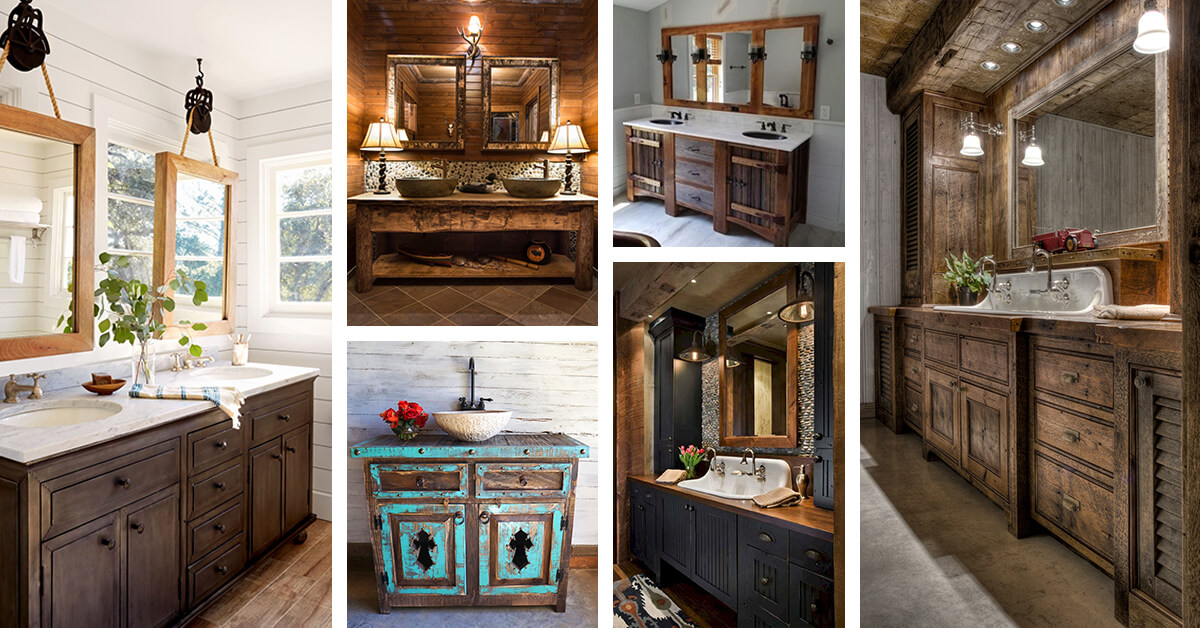
Dreamy Design: Rustic Bathroom Counters

Dreamy Design: Rustic Bathroom Counters
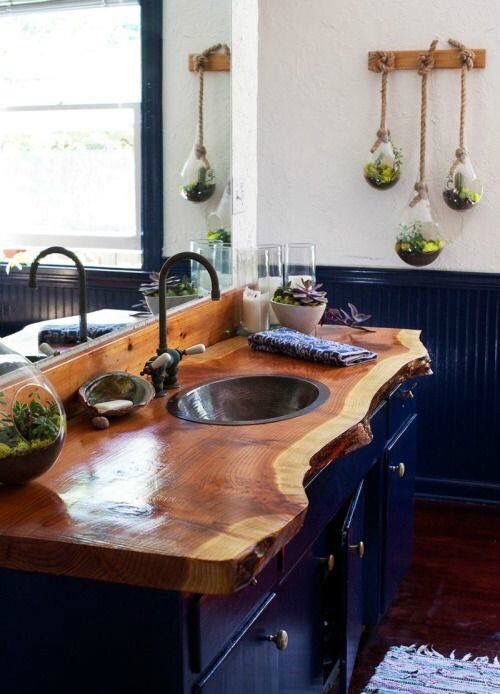
Rustic Countertops: Everything You Need to Know
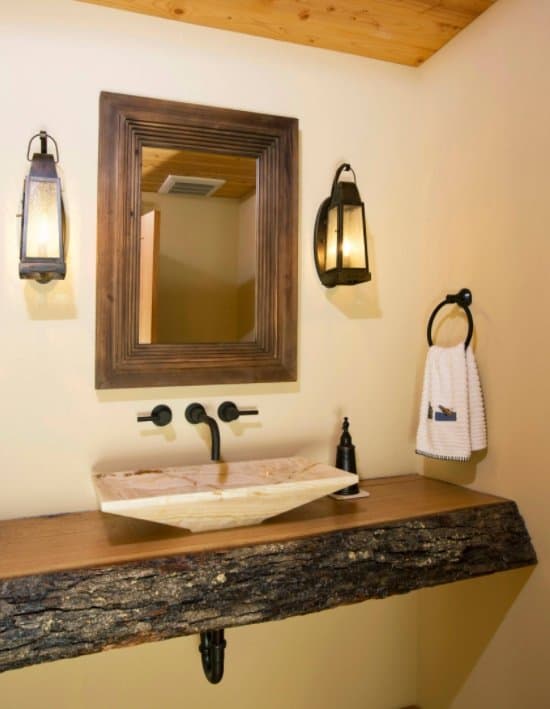
Beautiful Rustic Bathroom with White Countertops
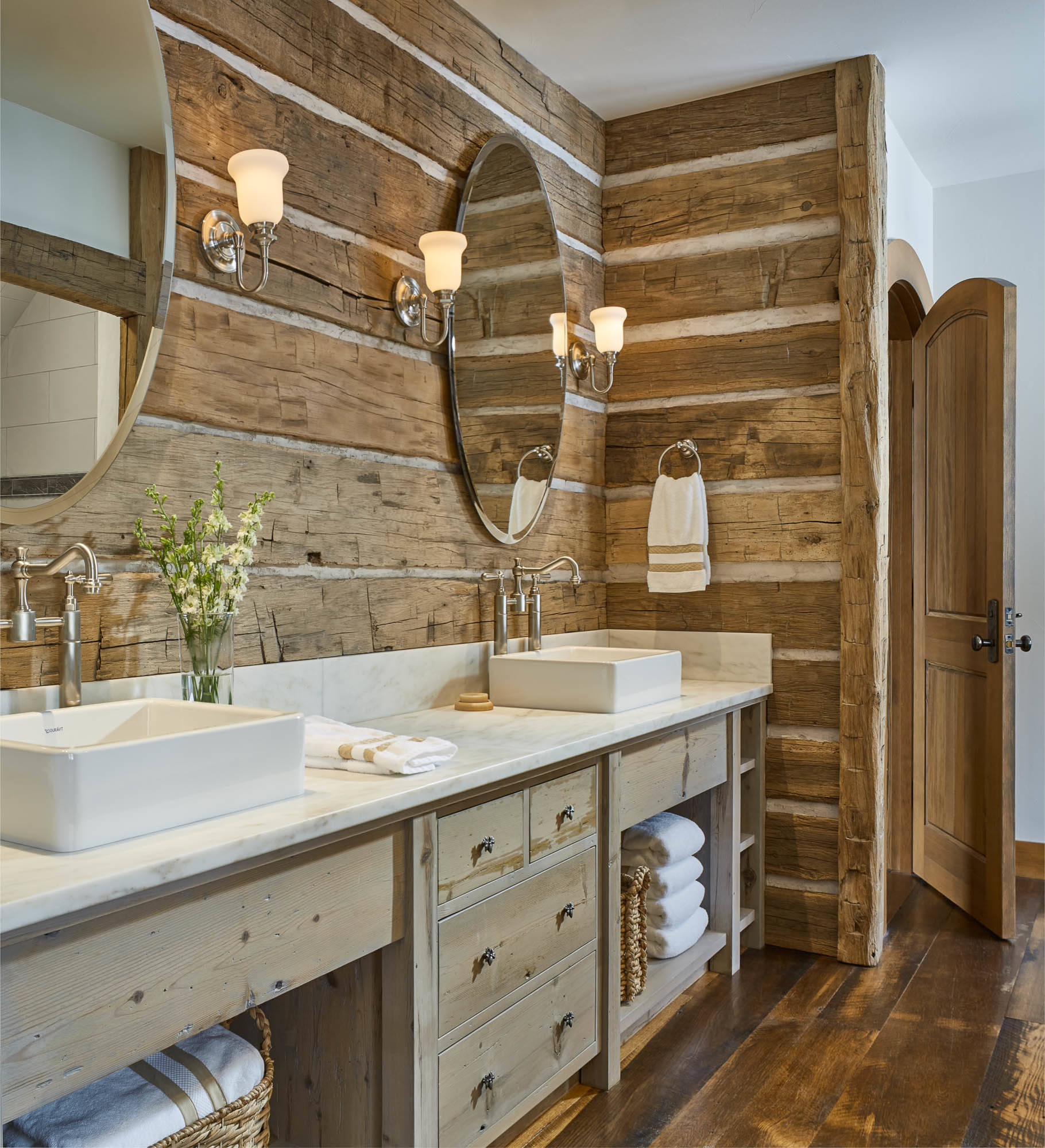
Related articles: